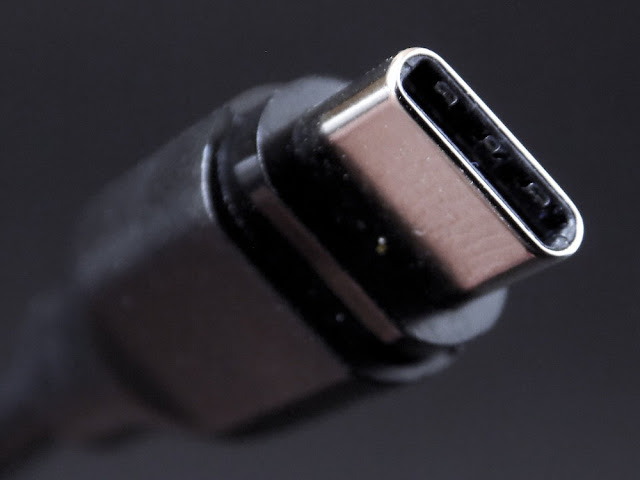USB4 is on the launch pad with interesting news and will be available in 2021 with other new protocols (Wi-Fi 6e, Thunderbolt 4, 5G ...) that we hope will take general connectivity functions (wired and wireless) to another level.
USB4 will be the next version of the peripheral and device interconnection standard. The most widespread in the technology industry is used by tens of billions of devices and its enormous popularity will unite the great performance of its convergence with Thunderbolt.
The Intel interface is the most advanced in terms of performance, with an input/output technology based on silicon photonics, but under optical communication, which provides greater capacity and speed. The union of both specifications will be very important for the user and also for the industry. Once Intel has shared the specifications with the responsible organization, USB Promoter Group, all manufacturers will be able to use it without royalty payment.
Basically, the convergence of Thunderbolt and USB protocols will increase compatibility between products based on USB Type-C connectors, simplifying the way to connect peripherals and devices. And at maximum available speed.
Why is it called USB4?
The name changed to the "USB 4.0" originally planned has been made to avoid confusion caused by incremental updates to previous standards, the CEO of the USB Promoter Group explained in his announcement. And it would be highly desirable since the trademark policy followed so far has been an attack on common sense, complicating the user's understanding of the different versions of a fundamental standard in the industry.
And it is that, in addition to USB 3.2, USB 3.2…. and earlier, which define the interface or protocol (basically the way to transfer data), USB-IF has used other names according to its maximum speed, which, although not part of the standard, have been greatly confusing. And then there are the connectors, up to six different ones available, although this section will be settled once USB Type-C is fully extended.
Hopefully, USB-IF will bring order. It would not be wrong for the promoter group to bet on the Wi-Fi Alliance strategy, with the adoption of brand definitions much more understandable for any user.
USB4 Features
The great improvement of the new version will come from the performance section, doubling its base bandwidth to 40 Gbps. It will also democratize the use of all the possibilities that were previously exclusive to the Thunderbolt 3 connector. The specifications of the new Thunderbolt 4 will also be integrated into USB.
Another enhancement to the release will be the use of multiple data protocols to take full advantage of the maximum available bandwidth. It should be mentioned that USB4 devices will be able to support three maximum speeds: 10 Gbps, 20 Gbps, and 40 Gbps, so the user will have to review the specifications of a specific device (for example a new laptop) to know the maximum performance that can reach.
As for the support, it will add compatibility to connect devices and equipment that are now limited to the Thunderbolt 3 port and will offer backwards compatibility with all the USB 3.0 and 2.0 standards. Obviously, in these cases, performance will be limited to what the older version allows.
More breakthroughs will come from charging the devices they connect to. USB4 will support the USB PD charging standard, which means that smartphones and other devices will be able to recharge batteries much faster, as long as they are designed to support fast charging. Integration with Thunderbolt will allow charging of up to 100 watts, enough to charge any laptop, tablet, or smartphone.
USB Type C, USB4 connector
The new connector that came with USB 3.0 was a great success and is becoming the promised great connection standard: universal, multipurpose and with greater potential than all the USB cables produced to date, while its symmetrical and reversible design greatly facilitates the connection when operating in any position and reduces the possibility of loading the connectors as with the previous ones.
USB Type C supports a wide variety of other protocols allowing interfaces such as HDMI, DisplayPort, Thunderbolt, and even the analog VGA video port to be connected. USB4 will bring improvements in this area.
The port supports two data lanes to send and receive signals from connected devices. However, some devices may use a single lane for one-way delivery. In this way, special modes of use such as the DisplayPort Alt Mode 2.0 will have an available bandwidth of up to 80 Gbps and will be able to feed content for monitors with a resolution of up to 16K with 60 Hz refresh rate.
It will also support 8K monitors and will offer improved performance for virtual and augmented reality uses. As an example, the specification should be able to offer simultaneous content on three screens with 4K resolution at 144 Hz and with support for high dynamic range. Quite a blessing for those who like multiscreen, although the equipment you connect to will have to have a particularly graphic monumental performance.
When does USB4 arrive?
The standard was expected to be released at the end of the year, although it will not be until 2021 when we see an acceptable deployment. The standard will be used in all types of equipment, mainly laptops, tablets, and smartphones, in addition to what comes from external storage devices. Intel and AMD are expected to support it on upcoming processing platforms, using new chipsets to be used by motherboard manufacturers.
The standard is backward compatible up to USB 2.0 although in these cases its performance will be limited. We believe that new USB Type-C cabling will also be necessary to take advantage of its full potential.











![[GUIDE] Ubuntu: how to free port 53 used by systemd-resolved](https://blogger.googleusercontent.com/img/b/R29vZ2xl/AVvXsEhTnOVoFyPFdIH_O58bx2dvTOjds0TlkTktMpMg3tW7GKuhiqyPivAPPjChpHvd-2TKm8yfhrpX_VGnBjV_e5h7HYEB9Ic07hkLGIRPF-mbsh7iFMICQwmNWAxq11PYPWz16aHUjhPCPacG/w100/ubuntu-19-04-eol.jpg)

0 Comments